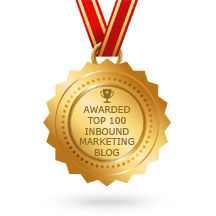
Last week we introduced the idea of Sales Enablement. While a relatively new and evolving concept, Sales Enablement is closely linked to Inbound Marketing, with an important distinction. As we know, Inbound Marketing uses great content to generate high quality leads. Sales Enablement is the next step in the process, designed to close the leads your brilliant content has worked so hard to create. To use a dessert analogy, if Inbound Marketing were the bowl of ice-cream, Sales Enablement is the sprinkles on top.
Interestingly though, many businesses fail to connect the two. A recent study by Qvidian revealed that 55% of Sales representatives have difficulty finding tailored selling content when they need it. An IDC study went further, finding that only 16% of sales reps were ‘extremely prepared’ for their initial meeting with qualified leads while 26% were ‘not prepared at all’.
In a time when marketers possess copious amount of information, content and product knowledge it seems strange that there is such a disconnect between the marketing and sales departments. It’s time for Inbound Marketing and Sales Enablement to align. Here’s how:
Better Define Your Lead Generation Goals
Marketing and Sales have to be on the same page. That means understanding the business’ goals, how many leads need to be generated each month, sales targets how much detail constitutes a lead.
HubSpot’s Alison Savery says that setting clear lead generation goals relies on understanding the broader aims of the business.
“First, meet with the management team at your company to determine your business' growth projections so you can understand how Marketing fits into this bigger picture,” she says. “So if your company is looking to grow by 5% in revenue in the following quarter, you’ll need to figure out how many leads or MQLs you’ll need to generate in order to close 5% more customers or revenue.”
“If you know what your marketing team can generate for new leads, and you also know your average lead-to-customer conversion rate, your business can actually predict future sales. And with closed-loop marketing in place, you can even track the revenue generated from the leads that were influenced by various channels or marketing events.”
Understand The Entire Buyer’s Journey, And Market Accordingly
The 4-step process of the Buyer’s Journey is well documented, but is it well understood across your business? It comes down to the simple reality that not all buyers are the same. The needs of a person who has just realised they need a new car will be different to a person who has already started comparing the Toyota Camry with the Ford Falcon. Marketing the same content to all prospective customers is asking to be ignored.
“To hone in on the conflicting needs of your audience, you have to consider the awareness, consideration, and decision stages of the marketing funnel,” says Forbes’ John Hall. “Prospects in the process of vetting potential solutions to a problem need vastly different information than those just identifying a need.”
“By creating content with the buyer’s journey in mind, you will simplify the writing process, establish new relationships, and help deepen those connections over time.”
Arming the sales team with the content that helps them connect with customers at various stages of the their buyer’s journey is crucial to guiding them through the sales process.
Create Content Relevant To Your Sales Team
The philosophy of this one is simple: equip your sales team with the right messages to take to the right leads at the right time in the buyer’s journey.
Sales Enablement Experts Accent agree, saying that content is crucial right throughout the buying cycle, both for customers and sales reps.
“Content marketing produces the qualified leads. Your sales team needs to continue leveraging this content (the content that caught their attention in the first place) with a dedicated content sales strategy,” they advise. “Because they’re closer to your leads than the marketing department, your reps are able to deliver content at a more personalised, targeted and segmented level. Tailor content for each buyer.”
But what kind of content should you create? That really depends on your business and what you’re selling. Ultimately however, you have the freedom to create any kind of content you feel will help your sales team close more leads. This can include:
- Blogs
- Whitepapers
- Case Studies
- Sales Scripts
- Product Sheets
- Competitor Comparisons
- Email Templates
- Website and Intranet Copy


